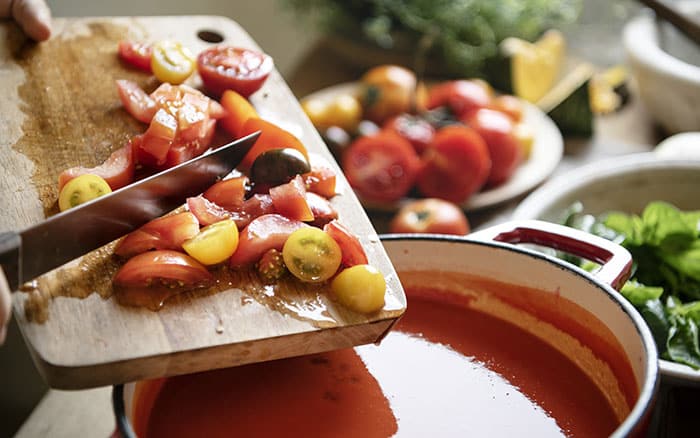With the nation turning ever carbon-conscious, you may have wondered if there’s anything you can do at home to make a real difference to your carbon footprint.
Making changes to your gardening gambit may reduce your environmental impact to make a difference, and you could even save money along the way.
Here are some ideas to get you started!
Food for thought

If you’re a culinary whizz in the kitchen, cooking meals from scratch is a simple, but effective, step because food manufacturing can produce about 3 times as much carbon emissions as home cooking.
This is due to the transportation and waste. To this end, cooking in batched is a quick way to make a difference. This way, you can always freeze portions to enjoy throughout the week.
Growing your own ingredients, is a really resourceful practise, and is really rewarding. If you’re new to the growing game, try your hand at a few simple grow-your-own veggies, like salad crops. Planting fruit trees will provide you with free, organic fruit, whilst the tree absorbs CO2 as it grows. For example, Malus domestica (apple tree) are easy to grow and are fully hardy, preferring a sheltered position in full sun to grow.
Grow herbs such as basil and thyme on your windowsill, strawberries are perfect to grow in window boxes and tomatoes growing in hanging baskets will kick start your own micro-garden. This is also a great activity for the kids to get involved in, there’s nothing more exciting that seeing the seed that you planted sprouting, and eventually being able to eat it!
‘Locavores’ restrict their diet to foods that are sourced within a certain range, usually 100 miles of home. But even shopping locally and in season will help reduce the ‘food miles’ it takes to get to you, so this can be a way to effect some change.
Else, you favourite haunts may already be sourcing local food, so you can look out for that when wining and dining out.

Waste not want not

In the UK, we throw away more than 7 million tonnes of food and drink every year—that’s equivalent to the weight of over half a million double-decker buses.
The good news is that now, more than 1/5 people in the UK are composting to reduce the amount that ends up in landfill releasing damaging gases into the atmosphere. It’s really easy to get started with home composting, read my expert guide to get up to speed.
By buying or making your own compost bin, you could be cutting CO2 emissions by up to 300kg a year!
You can compost so much of your organic waste including eggshells, vegetable peel, tea bags and coffee grounds. But make sure to avoid meat, dairy and fish which may smell. Stick to a balanced mix of green and brown waste and you’ll end up with perfectly fertile crumbly soil for your garden.
To reduce waste you can also make the most of the elements. Harvest the rain that falls on your roof by connecting a water butt to a downpipe. Or consider installing a rainwater harvest system, which collects and filters rainwater for use in your toilet and washing machine!
Home sweet home
Planting trees to provide summer shade and blocking winter winds will provide protection to your home, and if you choose deciduous trees, they will provide the benefit of letting through the sun in the winter.
Lucky for us, not only is this energy efficient but it will save money on your heating bill too.

On the hottest side of your house, train vines up trellises, keeping them at least 15cm from the wall which will provide a buffer of cool air. Growing ivy or other climbers up a building wall can have many benefits such as insulating and cooling the building, trapping pollutants and lessening noise.
Shop smarter

Before contributing to landfill waste, stop and think about what you can reuse in your garden. Many household items can prove really useful in your outside spaces and help us grow more efficiently. Check our my Pinterest board for inspiration on how to do this.
Cork is a natural anti-microbial product that will break down over time.
So, rather than throwing away old wine corks, you can use them at pot feet or even cut them up to use in your pots and beds as a perfect mulch.
Saving toilet paper tubes to plant seedlings is useful for plants that don’t want their root to be disturbed. The tubes are portable if you need to move them around and will disintegrate once planted in the ground.
Rather than buying new pots, getting creative with your containers is a great way to reduce your waste, and save you from buying if you’re on a budget.
There are so many small changes we can all make and have fun whilst doing it. Adapting your house to make the most of sun, shade and the rain will help your home to become a self-sustaining space.

Leave A Comment